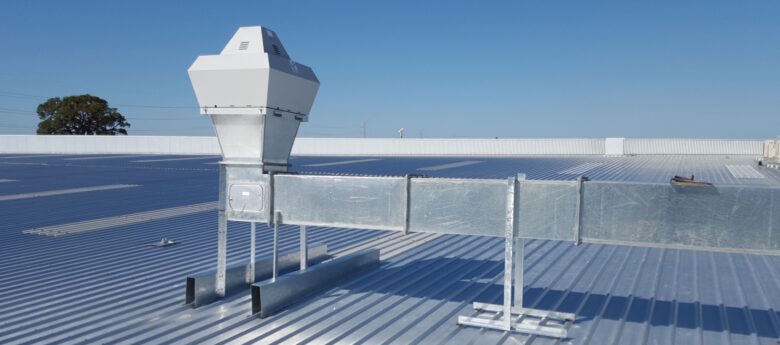ESSER Funds Can Protect Your HVAC

The importance of protecting or enhancing HVAC equipment has grown in awareness over the past few years. From the COVID-19 outbreak in 2020 to the rise of RSV in the latter parts of 2022, the use of HVAC solutions to improve indoor air quality (IAQ) in K-12 schools has become a major priority in school districts across the nation. There has been heightened concern in K-12 facilities with schools being forced to close due to the spread of illnesses. A perfect example of this was in Ann Arbor, Michigan. On Jan. 9, WXYZ in Detroit reported that Ann Arbor Public Schools were bringing back the mask mandate after a surge in respiratory illnesses led to at least five school closures in December 2022. The goal of the mask mandate was to limit the spread of these airborne pathogens following the winter break.
HVAC equipment offers excellent solutions to help prevent the spread of airborne illnesses. From single-packaged units to rooftop equipment, the filtration, ventilation and dehumidification solutions provided by mechanical HVAC units create a great defense for K-12 facilities. So, keeping these units operational is a must for school districts as the rise of respiratory viruses continue to plague students and faculty alike.
With that said, areas along the coastline or in heavy industrial areas may find it more complicated to prevent HVAC system failure due to one culprit – corrosion. When it comes to these areas, the salty air and increased moisture make the components of an HVAC system more susceptible to corrosive agents. When salts and industrial gases attack unprotected coil fins, it can lead to malfunctions and equipment failure. Due to the negative effects corrosion can have on an HVAC unit, it is paramount that schools have their coils and cabinets coated to create a protective barrier against the damaging agent. If corrosion caused a school’s HVAC unit to fail, it would be potentially catastrophic during a time when illnesses are prominent.
Whether you opt for OEM factory e-coated coils when installing new HVAC equipment or decide to apply aftermarket coatings, investing in coatings will help protect your HVAC units from corrosion and deterioration.
Federal Funding for HVAC Improvements
K-12 schools operate on strict budgets, and HVAC projects can be an expensive venture for school districts in lower-income areas. Thanks to the Elementary and Secondary School Emergency Relief (ESSER) Program, school facilities have a pocket of federal funds available to utilize for facility upgrades, renovations, and construction. As part of the program, the government allocated $190 billion in federal funding to the nation’s schools. According to an article published by McKinsey & Company in November 2022, the funds must be fully obligated by September 2024.
At the current rate in which these funds are being utilized, McKinsey & Company projected that nearly $20 billion in ESSER funds may not be obligated by the deadline due to a multitude of factors that include administrative hurdles, limited internal planning capacity and talent and vendor shortage.
According to the U.S. Department of Education, ESSER funds are authorized to be used on:
- Inspection, testing, maintenance, repair, replacement, and upgrade projects to improve the indoor air quality in school facilities, including mechanical and non-mechanical heating, ventilation, and air conditioning systems, filtering, purification and other air cleaning, fans, control systems, and window and door repair and replacement.
- School facility repairs and improvements to enable operation of schools to reduce the risk of virus transmission and exposure to environmental health hazards, and support student health needs.
With coil coatings playing a major role in HVAC maintenance along the coastline, utilizing these funds to protect school HVAC solutions from corrosion and early default is a must.
Coil Coatings Options
When it comes to selecting a coil coating process to utilize the ESSER funding on, there are two common options – OEM factory e-coats and aftermarket spray-on coatings. E-coats are applied in specialized facilities that allow for 100% penetration and uniform deposition of the coating through the coil no matter how thin or thick the heat exchanger is or how densely it’s packed. During this process, epoxy paint particles are evenly suspended in deionized water, and once it is electrically charged, the paint particles migrate to and bond with aluminum, copper, and other conductive metal surfaces that form the heat exchanger coils.
Aftermarket products, which can be applied on-site by a licensed professional, are applied using a spray-on method. Spray-applied coatings are an excellent alternative to e-coats that can be used to create a barrier of protection against corrosive agents for HVAC coils, cabinets and components. Aftermarket coatings provide similar rewards as OEM e-coated units and can also include antimicrobial properties to assist in IAQ improvement. These coatings are designed to withstand harsh environments while providing cost-effective protection against corrosive agents.
Keep Your HVAC Units Protected
While spending thousands of dollars on preventative HVAC maintenance may not normally be in a K-12 school’s budget, ESSER funds have made it possible for facilities to take the necessary steps to keep their units operating and protected. For schools located along the coast or in heavy industrial areas, it is vital to get your HVAC units coated against corrosive agents. During a time when illnesses are spreading through schools, it’s important to keep your units operating at maximum levels, and coil coating can assist with that. Whether it’s OEM-specified e-coats or aftermarket spray-on coatings, include these protective measures when utilizing ESSER funding on your HVAC units.
Daniel Fisher is the director of sales for Modine Coatings. Modine Coatings is a division of Modine Manufacturing Company.
